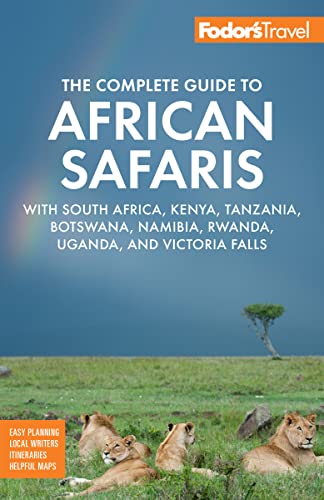Most visitors come away from Selous (sel-oo) Game Reserve acknowledging that this is Africa as it is—not as tourism has made it. The reserve is one of seven UNESCO World Heritage Sites in Tanzania. A true untamed wilderness, the reserve covers 50,000 square km (19,305 square miles) and comprises 5% of Tanzania. Selous Game Reserve is the largest national park in Africa and the second largest in the world.
Only Greenland National Park at 972,000 square km (375,398 square miles), which is larger than England and France combined, beats Selous. This is still arguably the biggest area of protected pristine wilderness left in Africa, but keep in mind that most of it is off-limits to tourists. The reserve is bisected from west to east by Tanzania's biggest river, the Rufiji, and only the area north of the river is open to visitors. So although it's teeming with game, it forms only about 5% of the total park.
The other 95% is mainly leased to hunting concessions. Hunting is still a very contentious issue, and although both sides passionately argue a plausible case, it's hard for many people to accept that shooting some of Africa's most beautiful and precious animals just for fun is ethically acceptable. However, hunting is under strict government control, and half of each substantial hunting fee is put back into the management and conservation of the reserve. It's possible that without this money the Selous would not exist, and rampant poaching would take over.
The visitor area of Selous north of the Rufiji River stretches for about 1,000 square km (386 square miles) and has great game-viewing and bird-watching opportunities. The fact that there are very few lodges adds to the area's exclusivity. These are along and beside the Rufiji River, which rises in Tanzania's highlands, then flows 250 km (155 miles) to the Indian Ocean. The Rufiji boasts the highest water-catchment area in East Africa. A string of five small lakes—Tagalala, Manze, Nzerekea, Siwando, and Mzizimia—interlinked by meandering waterways, gives the area the feel of Botswana's Okavango Delta. The bird life—more than 400 recorded species—is prolific, as are the huge crocodiles and lumbering hippos.
There are major advantages to visiting this park. First, although tourist numbers are now creeping up, there's little chance that you'll be game-viewing in the middle of a bunch of noisy vehicles.
Another major draw is that much of your game-viewing and bird-watching will be done from the water. Because Selous is a game reserve, not a national park, a larger range of activities is permitted, so you can walk, camp, and go on a boat safari. There's nothing quite like watching a herd of elephants showering, playing, and generally having fun as you sit in a boat in the middle of a lake or river. As you watch, lots of other game including buffalo and giraffes will also amble down to the banks to quench their thirst. If giraffes are your favorite animals, Selous will delight you because it’s one of the few places in Africa where you can see big herds of up to 50.
Another Selous bonus, especially if you've been bouncing about in a game vehicle for days in other parks, is that you can walk in the Selous, not alone but with an armed ranger. Although the game can be skittish as it’s not as habituated as in Serengeti or Ngorongoro, walking through the bush or beside a river is a rare opportunity to get up close with nature, and you never know what's around the next corner. Your lodge will organize a short three-hour walk, or if you want to camp out in the bush, an overnight safari.
Recently Selous has been listed on UNESCO’S list of World Heritage Sites under threat. Rampant poaching has decimated the elephant and rhino populations with numbers dropping by as much as 90% since 1982. Because of the increased demand for ivory, particularly from countries in the Far East, only some 13,000 elephants remain. Conservation efforts in Selous are desperately trying to stem the tide of poaching. There are also ongoing projects to try to protect and bolster the rhino population inside the park, which sits below 100, perhaps even as low as 30 individuals at the time of this writing. You will have a good chance of spotting the endangered African wild dog from June to August when they’re denning and stay put for a few months north of the Rufiji. Selous has up to 1,300 individuals in several wide-ranging packs: double that of any other African reserve. Selous is a birder's mecca with more than 400 species. Along the river with its attendant baobab trees and borassus palms, expect to see different species of herons from the aptly named greenback heron to the Malagasy squacco heron, which winters here. Storks, skimmers, and little waders of all kinds dig in the mud and shallow water, while at dusk you may get a glimpse of the rare orange-color Pel's fishing owl, which screeches like a soul in torment. In summer, flocks of hundreds of brightly colored Carmine bee-eaters flash crimson along the banks where they nest in holes, and kingfishers of all kinds dart to and fro.






